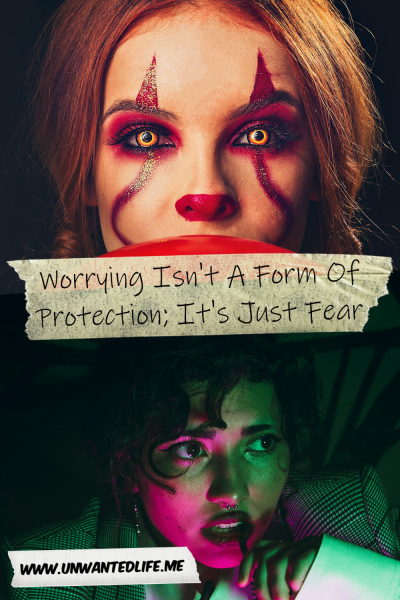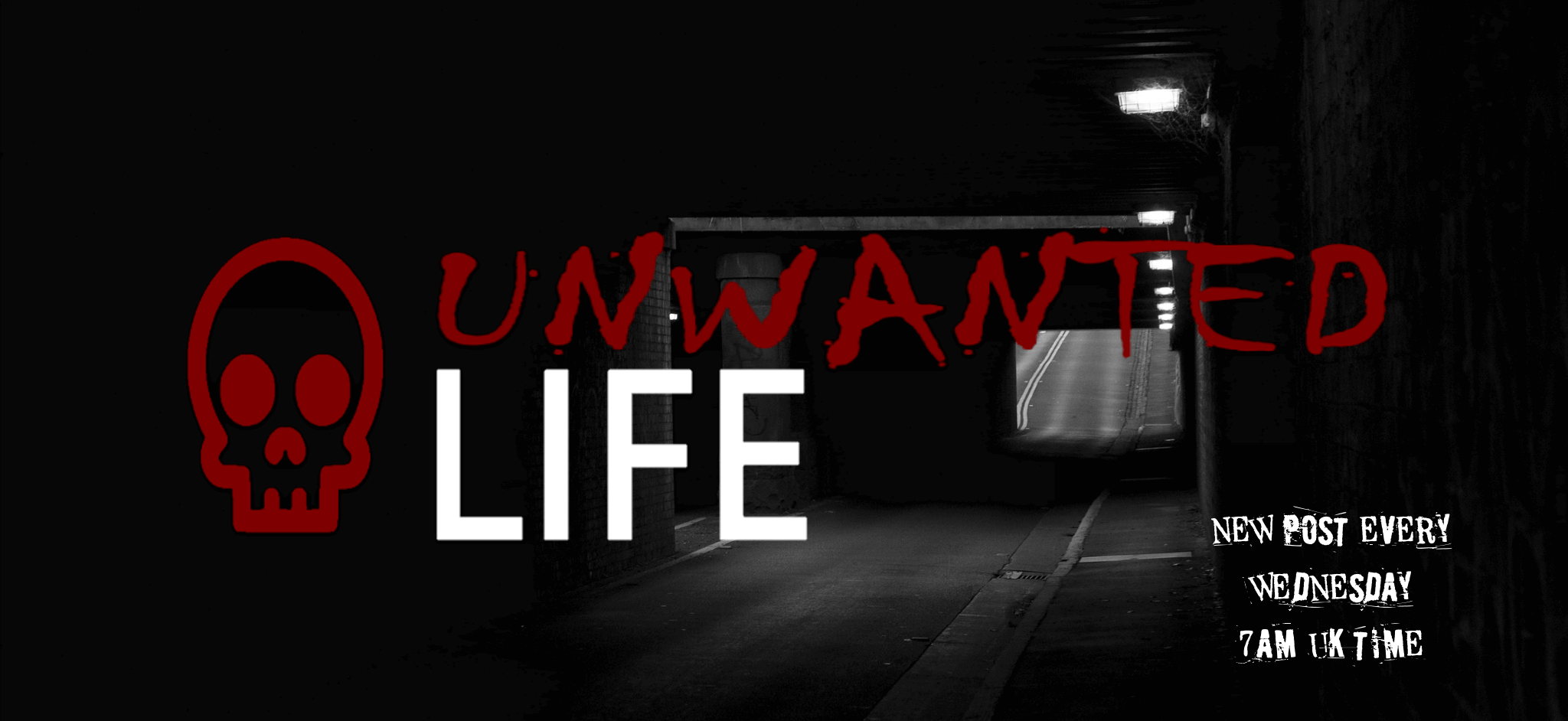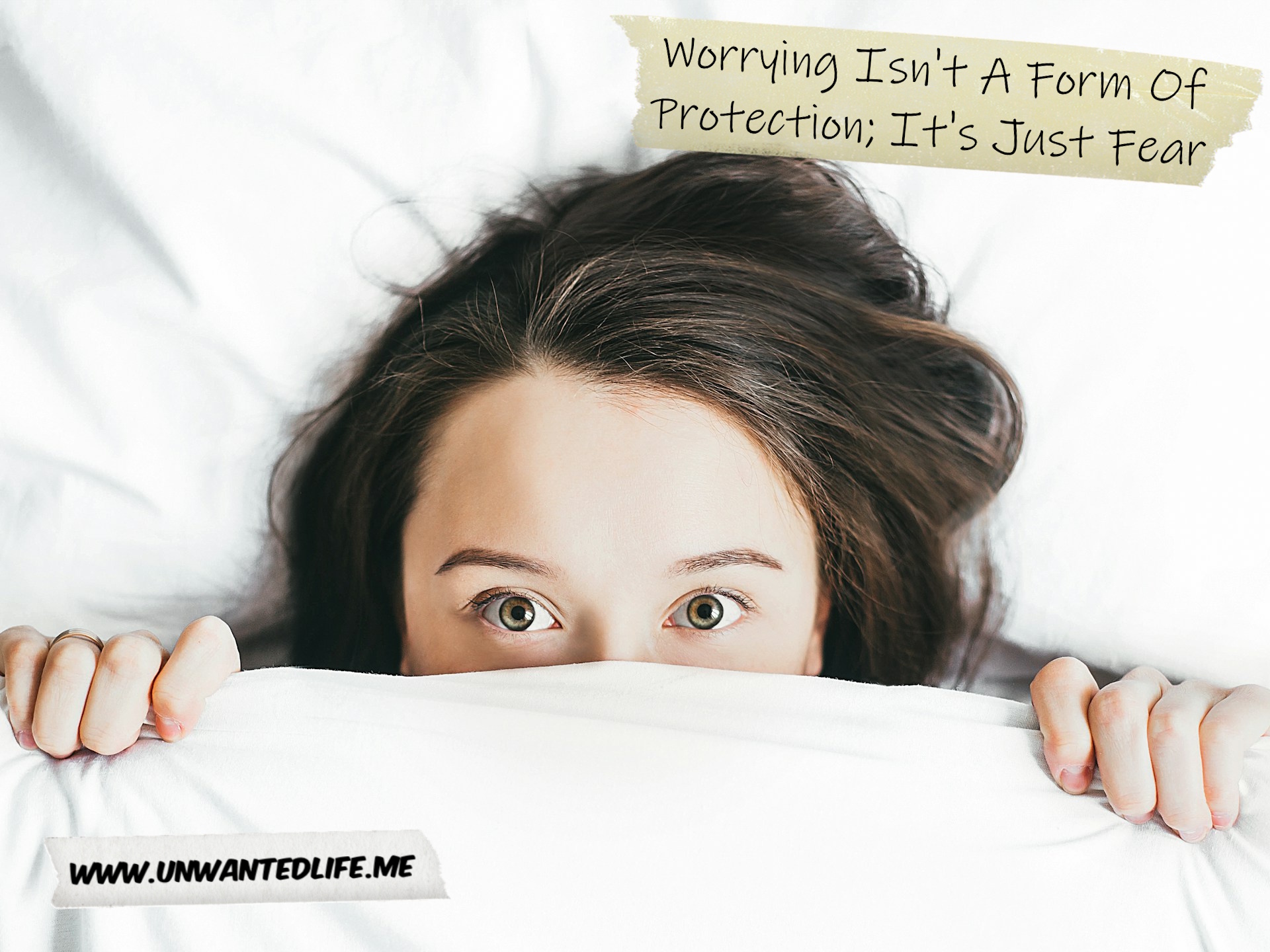It’s all too easy to confuse worry with being a form of protection, where we think ourselves safe. But is that really true? We’ll be exploring if our habit of worrying really is protecting us in today’s article.
Disclosure: This article contains links to my Unwanted Life Shop. Read my full disclosure here.
Is Worrying The Same As Fear?
The title isn’t entirely accurate; there are subtle differences between worry and fear, but in common usage, fear, worry, and anxiety are often used interchangeably. Fear is rooted in our primal brain, whereas worry is more cognitive. Another way to look at it is that fear is typically a response to danger, while worry is a response to uncertainty or potential problems. Or put another way, worry is the fear of uncertainty and potential problems.
Support for this comes from Szabó (2007), who conducted a study on adult and child participants to see how they conceptualise worry. Although it’s largely accepted that worrying is a cognitive process that’s related to fear and anxiety, the study found that worrying is fear caused by thinking. Adding that fear is a response to something, such as how a bad experience might make us worry about that happening again.
For example, if we hear the sound of a car backfiring, we may react in fear because it sounds like a gun. At the same time, we can fear being involved in a car crash every time we have to drive.
This is also supported by Delgado, Guerra, Perakakis, Mata, Pérez, and Vila (2009). They argue that worry is best defined as a series of connected thoughts and images that trigger mental attempts to avoid anticipatory threats. Thus, from this perspective, worry can be conceptualised as a form of anticipatory anxiety or non-cued fear reaction. Because of this, it can activate our defences, such as our fight, flight, freeze, or fawn response.
Contextual fear is just a learned association between a specific environment or context and a fearful or aversive experience. The most extreme version of this is our fear of death, better known as death anxiety.
Worrying And Feeling Anxious: Why Do We Feel This Way?
Worrying is a perfectly normal human condition, and throughout our species’ evolution, it’s played a vital role in our survival (Taylor, 2013).
Although we may find worry and our feelings of anxiety debilitating at times, there’s a reason these states developed in the first place. It may feel like we’re worrying for no reason, but our minds have determined this was something that we needed to do, often in response to something that happened to us.
For example, unhealthy worrying is often acquired as a result of our childhood, causing the development of a maladaptive core belief (Taylor, 2013). A need for perfection might develop as a result of abusive parent(s) who would always blame us for mistakes.
Because of this, our worrying and feelings of anxiety developed to help keep us safe, and it’s not uncommon to feel safe because of that worrying and feelings of anxiety (Ferguson, 2022). The problem is that feeling of safety becomes a cage. A cage of fear.
How Worrying Harms Us
Although we all experience worry, it’s when it stops being a healthy level of worry that’s the problem. When worrying becomes an unrelenting fear of something happening, it robs us of our happiness, our quality of life (Taylor, 2013).
Worrying is, at its essence, an avoidance response (Sibrava and Borkovec, 2006). It doesn’t matter that the thing we’re avoiding might not exist or not; we’re hard-wired to solve the problem and thus avoid the thing we fear. Our brains do that by causing us to worry.
However, allowing our fear to drive our worries will mean that fear will be reinforced, as, from our perspectives, if the thing we’re avoiding was successfully avoided, then worrying is useful. But we likely would have survived either way. We’re no longer hunting and foraging for food and having to compete and protect ourselves from other predators.
Each time it seems like our worrying was effective, the stronger our fear becomes, and the more reliant we become on worrying, creating a vicious cycle (Sibrava and Borkovec, 2006). Before we know it, it’s our default way of managing our wellbeing.
As Gazendam and Kindt (2012) found in their study, worry, after an initial fear acquisition, might affect the formation of that fear-related memory, as well as impair fear extinction. Or put another way, worrying feeds fear like throwing petrol on a fire feeds the flames.
Not only that, but dealing with chronic worrying consumes our limited mental and emotional energy. This can leave us feeling drained and less able to cope if a difficult situation actually arises. So instead of making us prepare for what we fear, it can mean we’re less able to cope if something does arise, especially if it was unexpected.
Because of this, worrying can negatively impact our physical and mental health as well. Chronic worrying is linked to increased stress, anxiety, sleep problems, and even physical symptoms like headaches and muscle tension. If we have irritable bowel syndrome (IBS), then it can make it worse. However, this link isn’t fully understood, but 60% of those with IBS meet the criteria for a psychiatric condition, such as anxiety (WebMD, 2025).
Worrying will amplify stress and anxiety, all while giving us the illusion of control. Our sense of control, or lack thereof, is one of the main reasons we worry. We might think that by mentally rehearsing all the possible negative outcomes, we’re somehow preparing ourselves or even preventing them. It’s like believing that watching a disaster movie repeatedly will make us safer in a real emergency. If only it were that simple.
In some cases, excessive worry can even contribute to the very outcomes we fear. For example, if we constantly worry about failing a test, that anxiety can interfere with our studying, concentration, and performance during the test itself. Our worry in this instance becomes a self-fulfilling prophecy.

Facing Our Fears
Unfortunately, the best way to overcome our fears is to face them. Instead of avoiding the things that cause us fear, we need to expose ourselves to them so we can realise that it isn’t as scary as it seemed. This is how we can cause the extinction of our fears and stop worrying and feeling anxious (Sibrava and Borkovec, 2006).
Several strategies could be used to help overcome the fear driving our worrying. The most significant one of these is exposure therapy (sometimes called graded exposure). Using exposure therapy, we create a fear hierarchy of situations that cause us fear, from the least to the most fear-inducing, and then work out a step-by-step plan to expose ourselves to our fears, starting with the least fear-inducing situation.
This can be done with a mixture of in vivo exposure (real, in-person), imaginal exposure (using our imagination to expose ourselves to our fear), and, in some cases, we can mimic symptoms as a form of exposure. All this is to help us build a tolerance to what we feel is intolerable, so the uncomfortable stops being uncomfortable, and maybe even becomes comfortable.
For example, if we had a fear of people with a certain accent because of an assault, then listening to recordings of that accent might help us break that fear connection. If we have emetophobia (a fear of being sick), then spinning on a desk chair to feel dizzy could be a good way to learn to manage those physical sensations.
If you’d like to find out more about exposure therapy, then I have several articles on the subject. But to get you started, try my first article on the topic, which you can find here. I also have an exposure workbook and a worry workbook that you might find useful over at my shop. You can find the exposure workbook here and the worry workbook here.
We can also develop better ways to manage our stress and other adversities, such as with an emotional first aid kit. Working on our resilience is also a good idea, such as working on how we perceive ourselves. We can also work on replacing our maladaptive core beliefs, as well as focusing on the things we can actually control and accepting that we can’t do anything about the things outside of our control.
Summary
Chronic worrying is considered an example of anticipatory anxiety, and thus contextual of fear. Where people can react with a fear response in the same way as they would with a cue from something that would trigger fear, like seeing a bear on a hike (Delgado, Guerra, Perakakis, Mata, Pérez, and Vila, 2009).
But while it might feel like worrying is helping us prepare for the worst or stay in control, it doesn’t actually offer any real protection. In fact, it often has the opposite effect. So instead of letting fear and worry rule our lives with a false sense of control, take action to face what we fear.
As always, leave your feedback in the comments section below. Also, please share your experiences with worrying in the comments section below as well. Don’t forget, if you want to stay up-to-date with my blog, you can sign up for my newsletter below. Alternatively, click the red bell icon in the bottom right corner to get push notifications for new articles.
Lastly, if you’d like to support my blog, please find the PayPal and Ko-fi donation payment options below. Until next time, Unwanted Life readers.
References
Delgado, L. C., Guerra, P., Perakakis, P., Mata, J. L., Pérez, M. N., & Vila, J. (2009). Psychophysiological correlates of chronic worry: Cued versus non-cued fear reaction. International Journal of Psychophysiology, 74(3), 280-287. Retrieved from https://www.academia.edu/85753673/Psychophysiological_correlates_of_chronic_worry_Cued_versus_non_cued_fear_reaction and https://www.sciencedirect.com/science/article/abs/pii/S0167876009002591.
Ferguson, S. (2022, March). Who am I if not an anxious person?. Psych Central. Retrieved from https://psychcentral.com/ocd/ocd-anxiety-as-a-safety-mechanism.
Gazendam, F. J., & Kindt, M. (2012). Worrying affects associative fear learning: a startle fear conditioning study. PLoS One, 7(4), e34882. Retrieved from https://journals.plos.org/plosone/article/file?id=10.1371/journal.pone.0034882&type=printable.
Sibrava, N. J., & Borkovec, T. D. (2006). The cognitive avoidance theory of worry. Worry and its psychological disorders: Theory, assessment and treatment, 239-256. Retrieved from https://library.uc.edu.kh/userfiles/pdf/21.Worry%20and%20its%20psychological%20disorders%20.pdf#page=258.
Szabó, M. (2007). Do children differentiate worry from fear?. Behaviour Change, 24(4), 195-204. Retrieved from https://www.researchgate.net/profile/Marianna-Szabo/publication/237145363_Do_Children_Differentiate_Worry_From_Fear/links/02e7e52131d72900f7000000/Do-Children-Differentiate-Worry-From-Fear.pdf.
Taylor, J. (2013, April). Worrying just makes you miserable. Psychology Today. Retrieved from https://www.psychologytoday.com/gb/blog/the-power-prime/201304/what-me-worry-why-worrying-does-more-harm-good.
WebMD. (2025, February). Stress, anxiety, and irritable bowel syndrome. WebMD. Retrieved from https://www.webmd.com/ibs/stress-anxiety-ibs.


An interesting post. It’s so easy to confuse and conflate the three as they seem like a triumvirate of issues. My issue with worrying escalates when I’m in bed trying to sleep, is there any reason for this?
When we’re trying to go to sleep, it’s generally when our mind is less distracted, thus our minds take the opportunity to remind us of the things it doesn’t want us to forget, generally because it’s seen as an unfinished task or an unsolved problem. Journaling about the things on your mind before bed or creating a to-do list to track tasks so you mind doesn’t have to, can help with this. Keeping a notepad next to your bed in case you wake up worrying can also help with clearing the mind so you can fall back to sleep easier
Yes, don’t build walls to protect yourself. Face your fears with grace. That’s divine.
Thanks for commenting
Interesante publicación 💯
Thanks